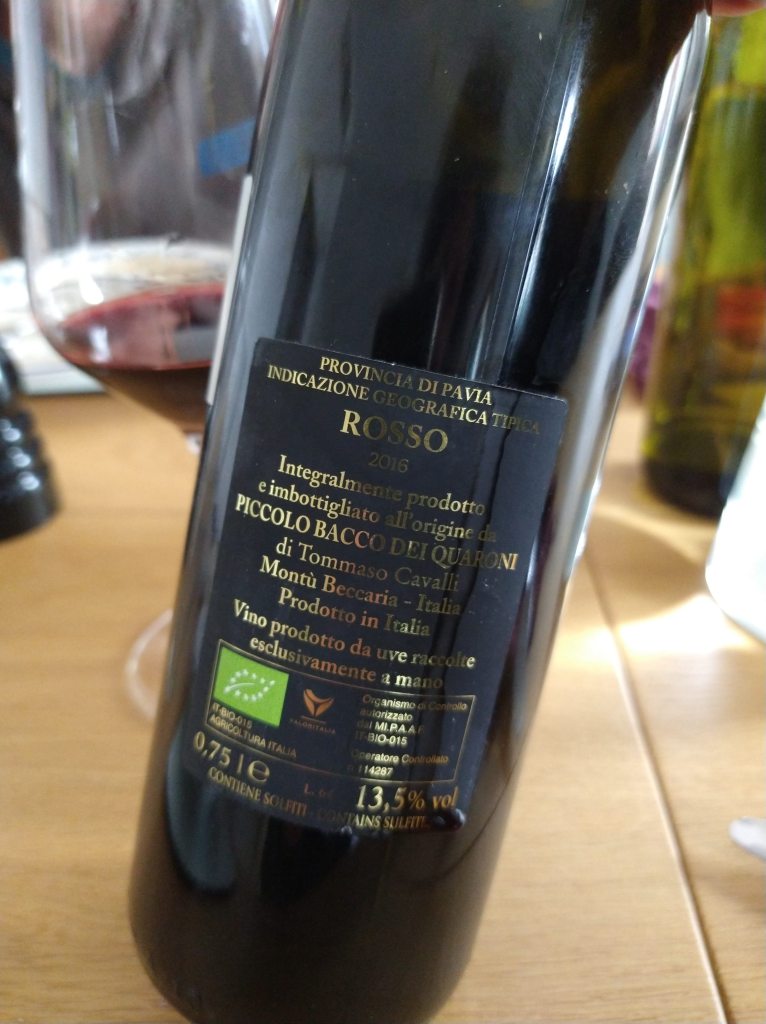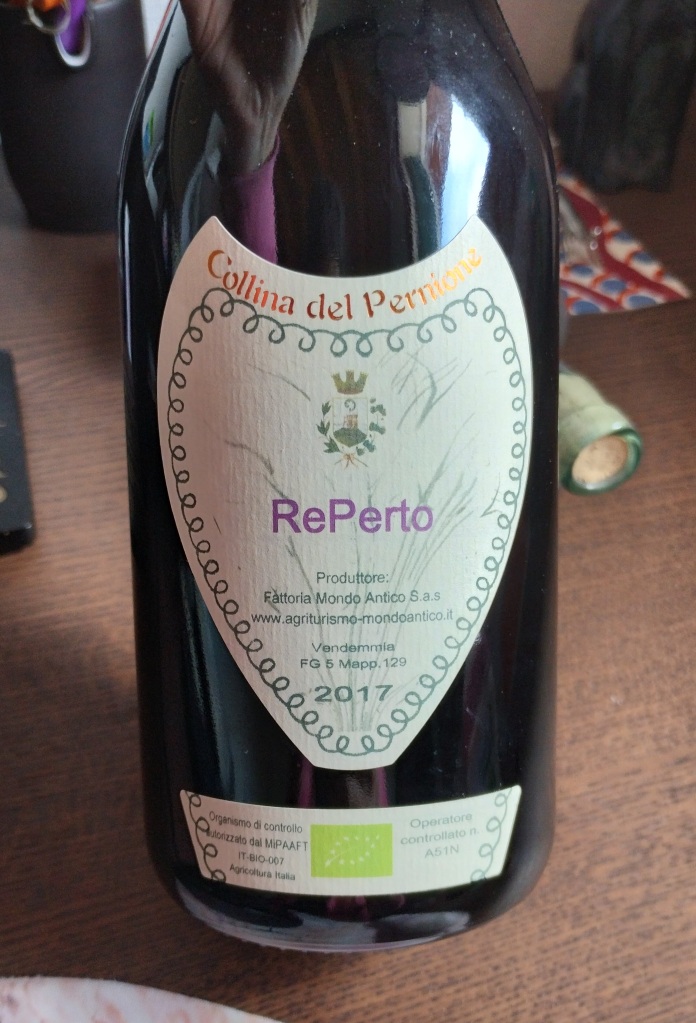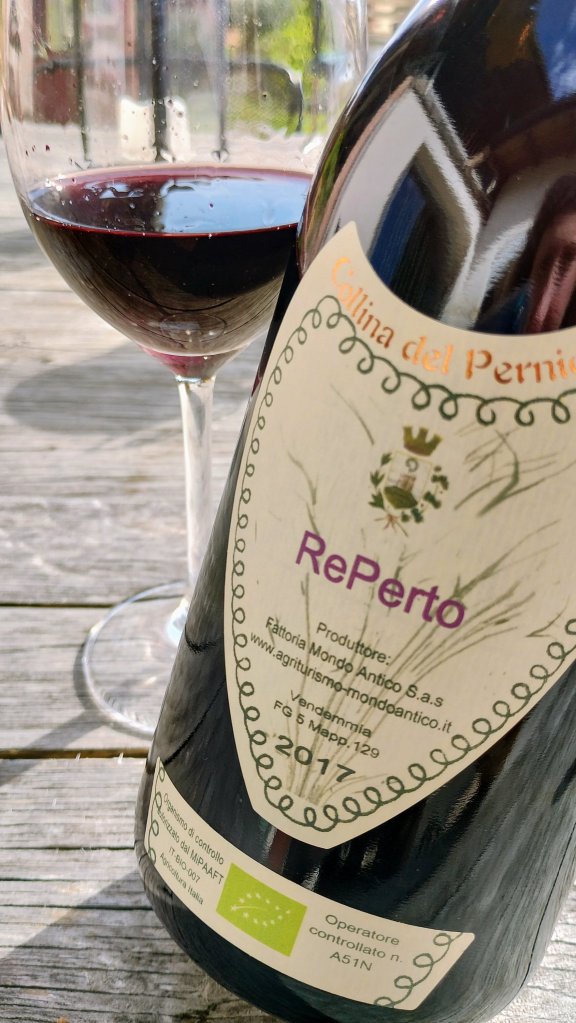For longer than I’d like to admit, this tasting note has been sitting in my Drafts folder.
“PICCOLO BACCO DEI QUARONI “Il Moreè” Provincia di Pavia Rosso IGT 2016, 13.5% ABV
As dark as the sky on a moonless night, this is a wine which is dense and broody. Upon opening, it was practically impenetrable. On the second – and even more so by the third – day, there were more aromas of blackcurrants, brambles and mulling spice and smoke, and a touch of camphor. In the mouth, the tannins, still grippy, pucker the tongue. The structure shows no sign of losing its bodybuilder stance but paired with the right food, it makes for a wonderful pairing.”


The winery “Piccolo Bacco dei Quaroni” was founded in 2001 when four friends – Mario, Laura, Giulia and Tommaso – bought a small historic cellar in Montù Beccaria, on the side of the Oltrepò Pavese that is practically on the border between the regions of Lombardia and Emilia-Romagna.
The tech sheet – available online here – says that the wine in question is composed of 80% Moradella and 20% Uva Rara. (Considering Moradella is not exactly a major variety, I’m curious to know what the “rare grapes” actually are!) In any case, just the mention of moradella piqued my interest and, as always, my first reflex is to consult Jancis, Julia and José’s Wine Grapes book.
“Prized by growers but not recognized by officialdom” that’s how the grape variety moradella is introduced.
It continues: “once the most important variety in that area [Oltrepò Pavese (Lombardia)] its popularity has declined dramatically in favour of barbera…” Two reasons are given: 1, the variety’s sensitivity to oidium and 2. because moradella has never been included in the national register of grape varieties. (It baffles me that it should have been left off the list, but then I remember that this is a matter of Italian bureaucracy so anything is possible… Anyway I digress…)
“It is now only found in old vineyards but is prized by growers and used incognito with barbera and croatina in such blends as Buttafuoco and Sangue di Giuda, both within the Oltrepò Pavese DOC.” (Wine Grapes, 2012.)
Ian D’Agata’s “Native Wine Grapes of Italy” concurs almost verbatim, while also giving an interesting bit of insight: “in the past, experts found a strong resemblance with mourvèdre.”
Wine Grapes suggests seeking out moradella wines made from producers such as Fortesi, Cantina Storica di Montù Beccaria, Il Santo and Fattoria Mondo Antico – all of whom apparently make “valiant efforts to preserve the variety.” Fortunately, the latter is also a member of the VinNatur Association (as is Piccolo Bacco dei Quaroni) so recently I was able to get my hands on – and my nose into – a glass of their 100% moradella.
Fattoria Mondo Antico is a family-run winery situated on the opposite side of the Oltrepò Pavese from PBQ, in Rocca Susella, near the border with Piedmont. The estate comprises a total of 26 hectares, of which only 4 are planted with vineyards and the rest is dedicated to agriculture and woodland, with 3 hectares dedicated to their free-range pigs!


FATTORIA MONDO ANTICO “RePerto” 2017 “vino rosso ottenuto da uve Moradella L.0419. 14.5% ABV”
The first striking element about this wine is the deep, dark purple colour. Having just finished a tasting note about Villa Calicantus’ Bardolino Classico, this intensity comes as a shock. The nose is spicy and earthy but a little shy and austere. Take a sip and let yourself be lulled into a world of ripe black plums, juicy blackcurrants with undertones of forest floor and game. It is a wine which is full bodied yet smooth. There is a substantial amount of flesh on this wine’s bones – the pulp of these prized grapes perhaps – but the effect is comforting rather than oppressive. The tannins and the acidity right now are perfectly in balance and whilst the alcohol is noticeable, the overall sensation is most harmonious.
I find Ian D’Agata’s comment about the similarity with mourvèdre particularly apt. I don’t know about the visual aspect but the gustative profile certainly seems aligned with some mourvèdre and monastrell that I’ve tasted in the past. Moradella feels rustic and archaic in both of these expressions, and not a variety adapted to making expansive, glu-glu wines that pull in the natural-wine crowds in the year 2023, nor does it seem to have the prerequisites for making barriqued, Parker-style wines. That said, they’re both good, well-made wines, but in order to enjoy them, you need to adapt to their habitat rather than the other way round.

